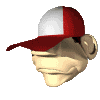Tips - Coaches
Subscribe to our Newsletter
This is where we will be posting information, guidelines, resources, and suggestions to hopefully make your coaching experience more rewarding. Please eMail us any materials you have that you would like to share with others.
Field Maintenance Procedure
Coaches,
Please follow these simple 3 steps to ensure our fields are always in best playing condition
1. Rake dirt to fill holes / low areas after every game and practice.
Post game raking is not to make field look nice, it is to eliminate low areas that will hold water and render field not playable.
a. Use Rake to loosen dirt around the area of hole
b. Turn Rake upside down and push dirt into hole
c. Step on hole area to compress dirt
The areas to concentrate on are:
a. Home Plate - batters boxes, catcher and umpire areas
b. Pitchers Mound - Rubber and foot landing spots
c. 1st Base lead spots
d. 2nd and 3rd base slide spots
Filling holes and low areas takes 5 minutes and saves hours of work in making fields playable. Teach kids / get volunteers to do this. Never leave field without spending 5 minutes doing this. If you find bad holes on fields when you show up, report it to your director so we can make sure everyone understands this important need.
When it rains
2. Get to field as early the next day as possible to spread water.
Puddles must be eliminated early to allow for natural field drying time. Sweeping should ideally occur hours before game time (morning or early afternoon) a. Use broom to sweep water on surrounding infield dirt areas
b. DO NOT - DO NOT sweep water onto any grass / any non infield dirt area. Special infield treatment chemicals will Kill grass. NEVER move water onto grass areas
c. Sweep water up or down baselines onto dry area. Though the dry areas will become wet, they will quickly dry again while leaving the bad low areas a chance to dry
d. After sweeping water, use rake to penetrate deeper into the dry ground beneath the bad saturated areas. This will create extra drainage and will rotate muddy dirt to the top for quicker drying
3. Final step is to apply Quick Dry if needed.
Quick Dry is expensive and needs to be used sparingly. One or two bags of Quick Dry will typically take care of field
a. Quick Dry should be used close to game time. 60 - 90 minutes prior is fine. Do not use early in day, let natural drying occur to reduce the need for Quick Dry
b. Spread Quick Dry lightly (1/8 inch) over needed areas
c. Use rake to mix the Quick Dry with the dirt. Work it in and drying will instantly happen
DO NOT use Quick Dry if field is in such a bad state that 3 or 4 bags won't solve. Usually a single bag is all you need. Cancel the game if you think more than 3 bags are required. Doing steps 1 & 2 will always put you in best position to play. Quick Dry is a final step - NOT the primary solution
4. Rain during game
Use quick dry between innings on pitchers mound and home plate as needed to get started game completed
A great tool to help coaches keep track of player positions and changes during games
Check out these clips on some great pitchers. Look at their deliveries. Is this how you look when you pitch?
Nolan Ryan / Daisuke Matsuzaka http://www.youtube.com/watch?v=tGPcvbZA4mc
Sandy Koufax http://www.youtube.com/watch?v=dm8oHYRS6hA
Bob Gibson http://www.youtube.com/watch?v=i12_9wNKHkE




